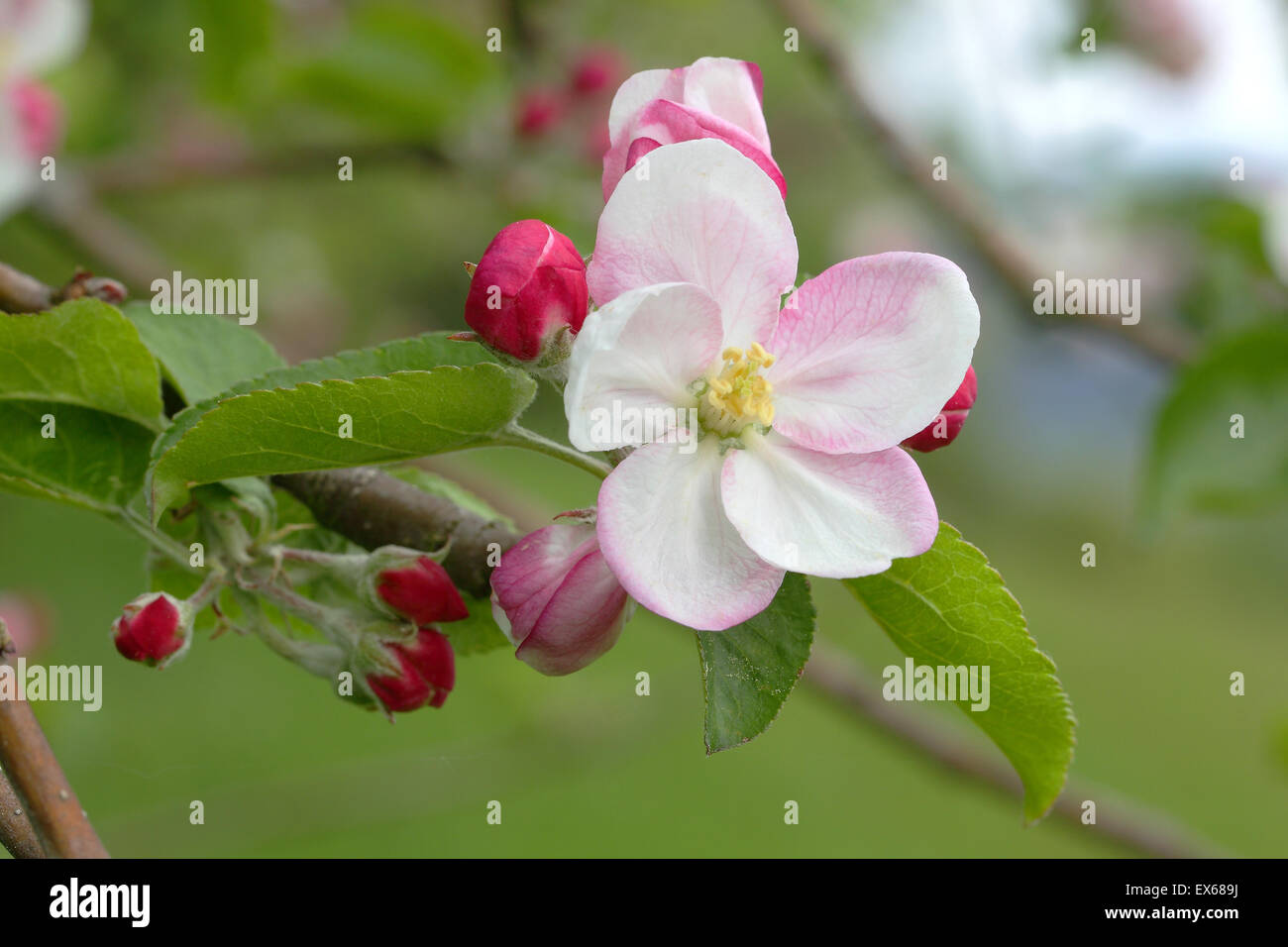
European Crab Apple (Malus sylvestris), blossoming branch, North RhineWestphalia, Germany Stock
description: The wild apple is the original variety in Central Europe. The name has the wood apple of his very hard fruits. Before eating the fruits are parched or boiled. Tree profile name botanical: Malus sylvestris family: Rose family (Rosaceae) species: deciduous tree height: up to 10 m (33 ft) leaf:

European crab apple (Malus sylvestris), Germany Stock Photo Alamy
European crab apple ( Malus sylvestris) is an ancestor of cultivated apple trees, along with some cultivated varieties of crab apple. Mature trees grow to around 10m in height and have a rounded shape and wide, spreading canopy. However, it can also be grown as part of a hedge.

Flowering Malus Sylvestris the European Crab Apple in the Spring Garden Stock Photo Image of
Watch the Latest from AppleInsider TV. The Commission made "material factual errors," Apple claims in its European General Court plea, reports Reuters. These errors include a conclusion "that the.

Malus sylvestris (Apple, Crabapple, European Crab Apple) North Carolina Extension Gardener
European crab apple is a mid-temperature plant that can easily tolerate the typical fluctuations of the seasons and remain a hardy species when planted in maintained landscapes areas, containers, or indoors. Therefore, adjusting the temperature during the different seasons is unnecessary for primary growth. If flowering is stunted or impeded.
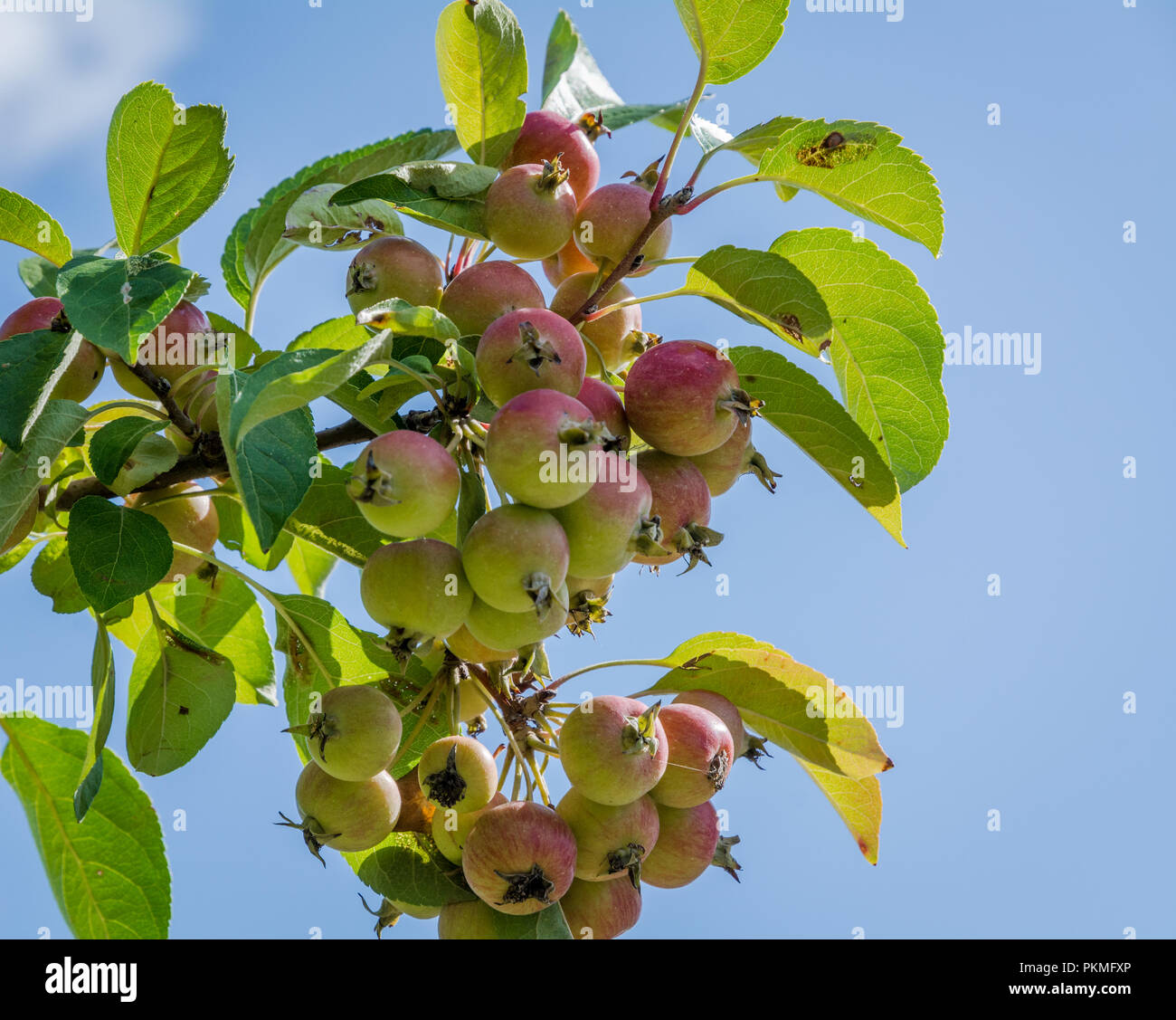
Wild apple branch. Malus sylvestris esemplar. Closeup showing fruit and leaves.European crab
Malus sylvestris, the European crab apple, also known as the European wild apple or simply the crab apple, is a species of the genus Malus, native to Europe and western Asia. Its scientific name means "forest apple". Description and identification The wild apple is a deciduous small to medium-sized tree, but can also grow into a multi-stemmed bush.

Malus sylvestris European crab apples Pommier, Arbuste, Cultiver
European Crab Apple Previously known as: M. pumila Phonetic Spelling MAY-lus sil-VES-tris This plant has low severity poison characteristics. See below Description The scientific name Malus sylvestris means "forest apple".

European crab apple (Malus sylvestris) fruits, Ardeche, France Stock Photo Alamy
Malus sylvestris (European wild or crab apple) belongs to the Rose family (Rosaceae) and is a small tree native across Europe. It reaches its north-western distribution limit in Scotland and Norway and is probably the UK's least understood and most under-appreciated tree, as even foresters sometimes do not seem to be aware of its native status.

European crab apples stock image. Image of ripe, fruits 34027615
Common name: crab apple. Scientific name: Malus sylvestris. Family: Rosaceae. Origin: native. One of the ancestors of the cultivated apple (of which there are more than 6,000 varieties), it can live to up to 100 years. Mature trees grow to around 10m in height. They have an irregular, rounded shape and a wide, spreading canopy.
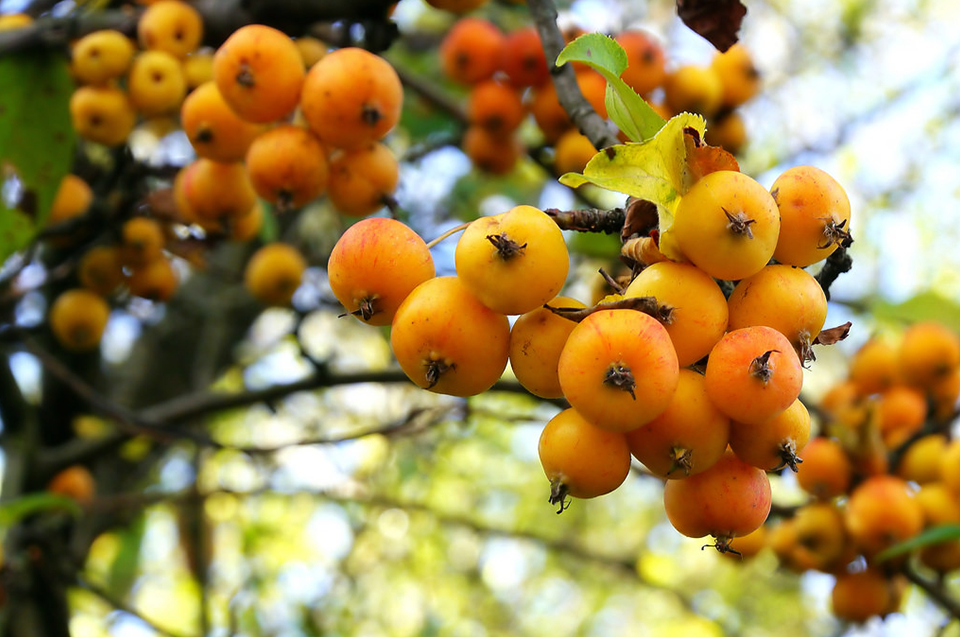
European Crabapples Complete Information Including Health Benefits, Selection Guide and Usage
Michelle L Hart Royal Botanic Garden Edinburgh Peter Hollingsworth Royal Botanic Garden Edinburgh Abstract and Figures We present a genome assembly from an individual Malus sylvestris (the.
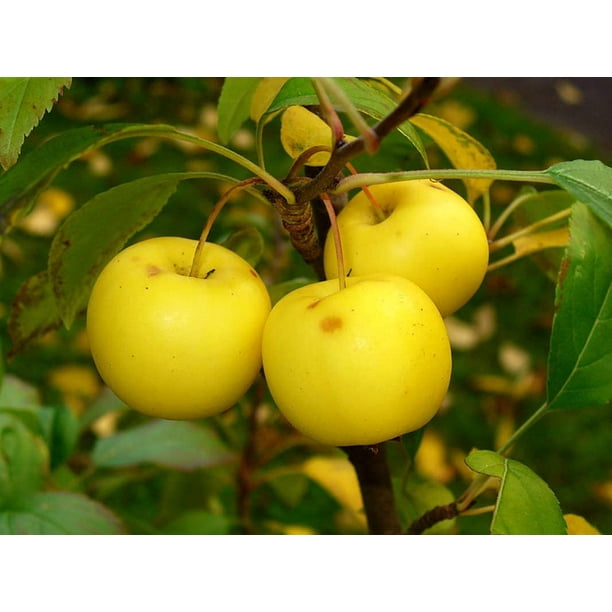
European Crab Apple, (French Crabapple), Malus Sylvestris, Tree 30 Seeds
The European crabapple Malus sylvestris, a crop wild relative of Malus domestica, is a major contributor to the cultivated apple genome and represents a potential source of interesting alleles or.

European Crab Apple (Malus sylvestris) blossom in the Quantock Hills in spring, Somerset
The deciduous European crabapple tree is a unique plant that can live for as long as 80 to 100 years and reach up to 33 feet tall, with a trunk diameter averaging between 9 to 17.5 inches. When grown in the wild, European crabapple trees have thorns, and the branches' shorter height and wide spread sometimes make the tree look more like a bush.
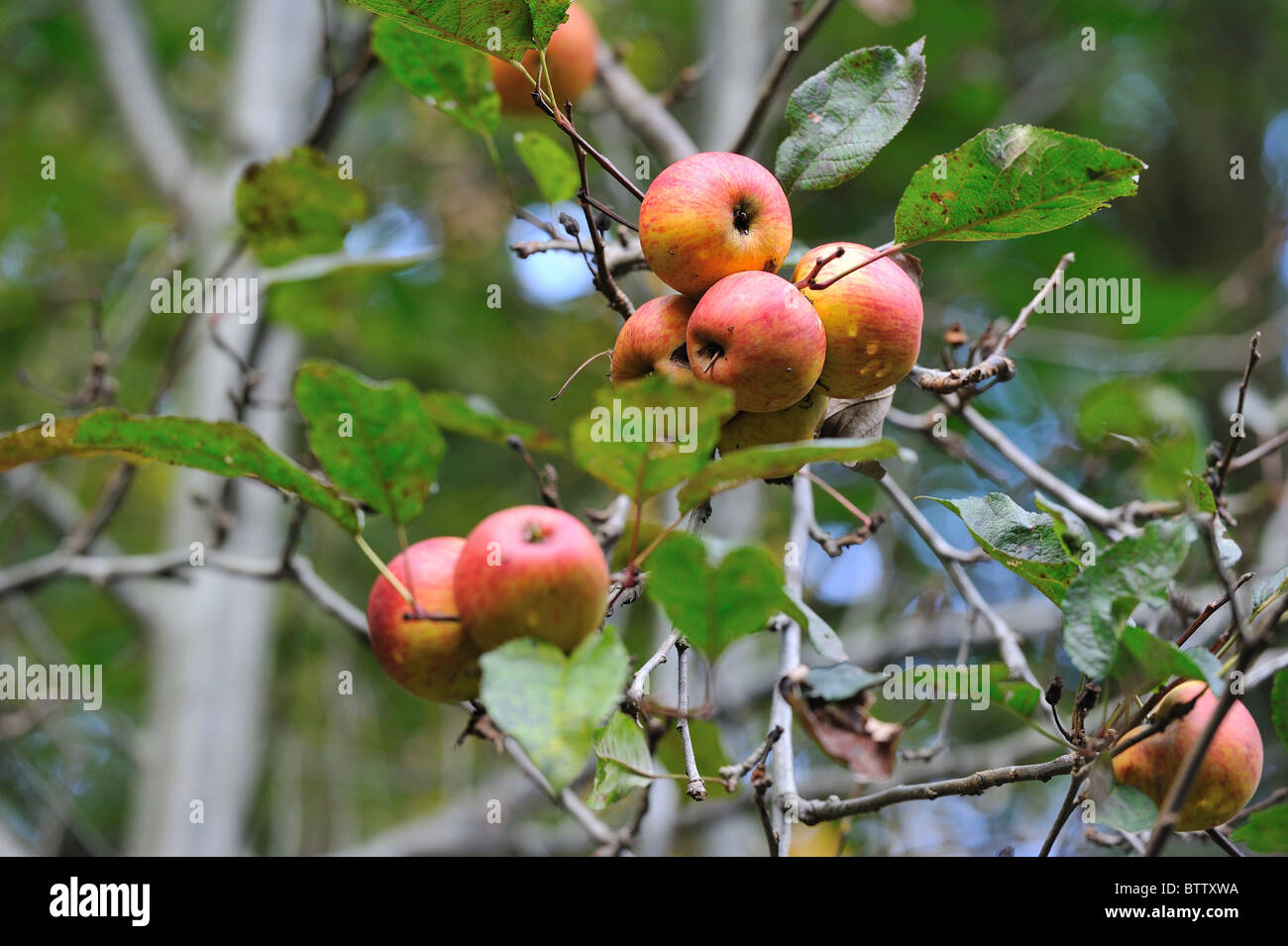
Crab apple tree European wild apple tree (Malus sylvestris) bearing fruits in autumn Belgium
Abstract We present a genome assembly from an individual Malus sylvestris (the European or 'wild' crab apple; Streptophyta; Magnoliopsida; Rosales; Rosaceae). The genome sequence is 642 megabases in span. Most of the assembly (99.98%) is scaffolded into 17 chromosomal pseudomolecules.
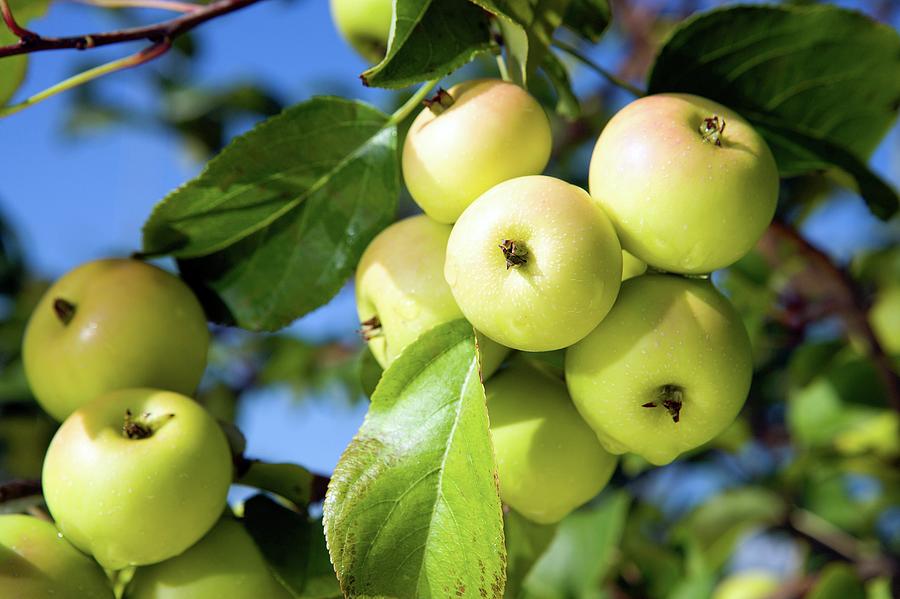
European Crab Apple Photograph by Peggy Greb/us Department Of Agriculture/science Photo Library
Malus sylvestris is a deciduous Tree growing to 10 m (32ft 10in). See above for USDA hardiness. It is hardy to UK zone 4 and is not frost tender. It is in flower in May, and the seeds ripen from September to October. The species is hermaphrodite (has both male and female organs) and is pollinated by Insects. It is noted for attracting wildlife.

European Crab Apple Malus Sylvestris 20 Seeds Etsy
The European crab-apple is probably one of our least understood and most under-appreciated native trees. M. sylvestris was one of the wild species that gave rise to our domestic apples in.

Malus Sylvestris 25 Seeds European Crab Apple Tree
European crab apple is a small and thorny, native wild tree, which is distributed over most of the European countries, including all the Nordic countries except Iceland. Its scientific name, Malus sylvestris, means "forest apple". It is found growing as single individuals or in small groups in forest edges, thickets, hedgerows or roadsides.

Flowering Malus Sylvestris the European Crab Apple in the Spring Garden Stock Photo Image of
The environmental damage in the United States is estimated at $120 billion to $137 billion per year. One of California's most destructive foreign pests was the Mediterranean fruit fly, which infested fruit orchards around the state beginning in the 1970s and cost hundreds of millions to combat. The economic and environmental impacts are.